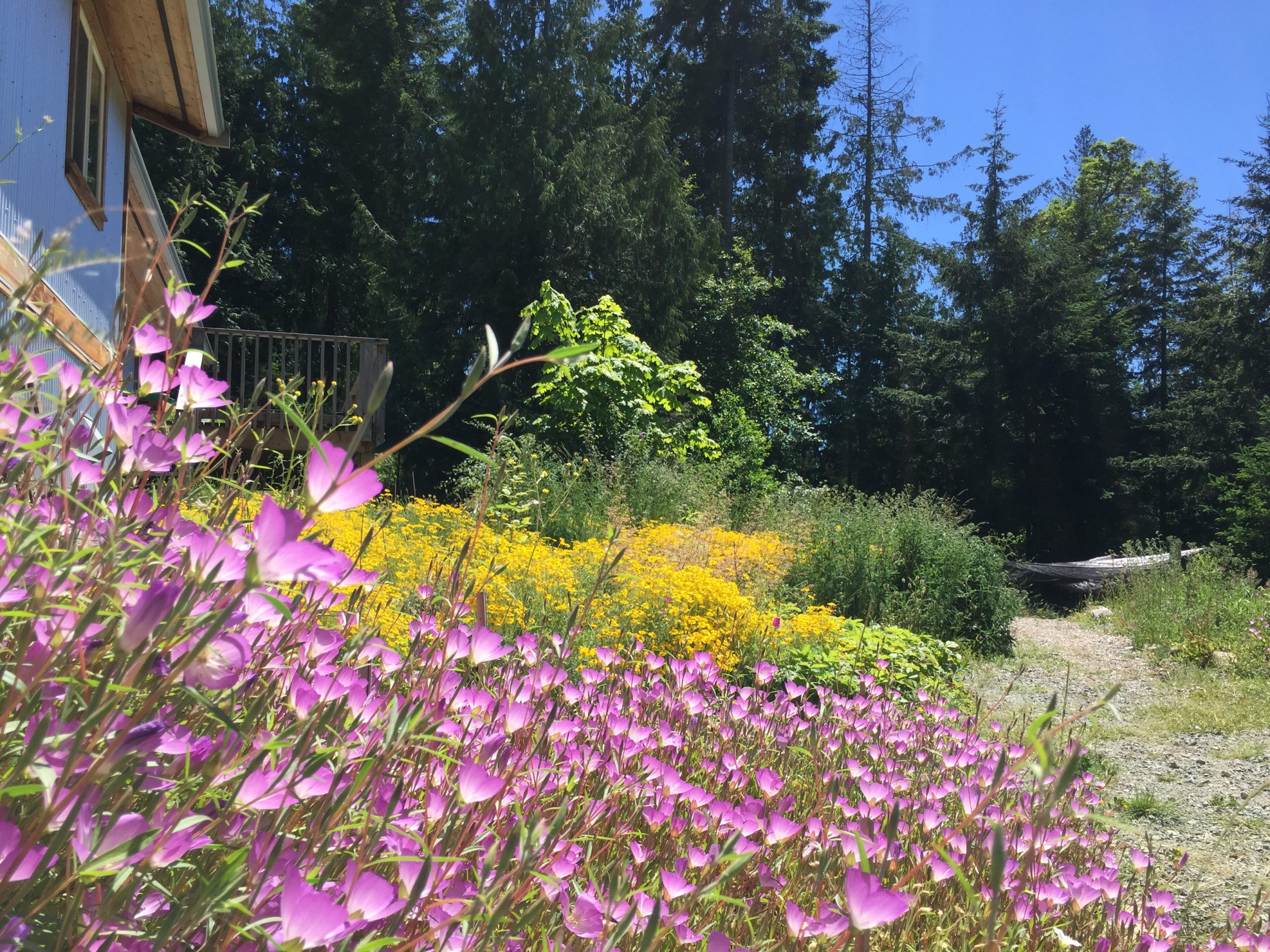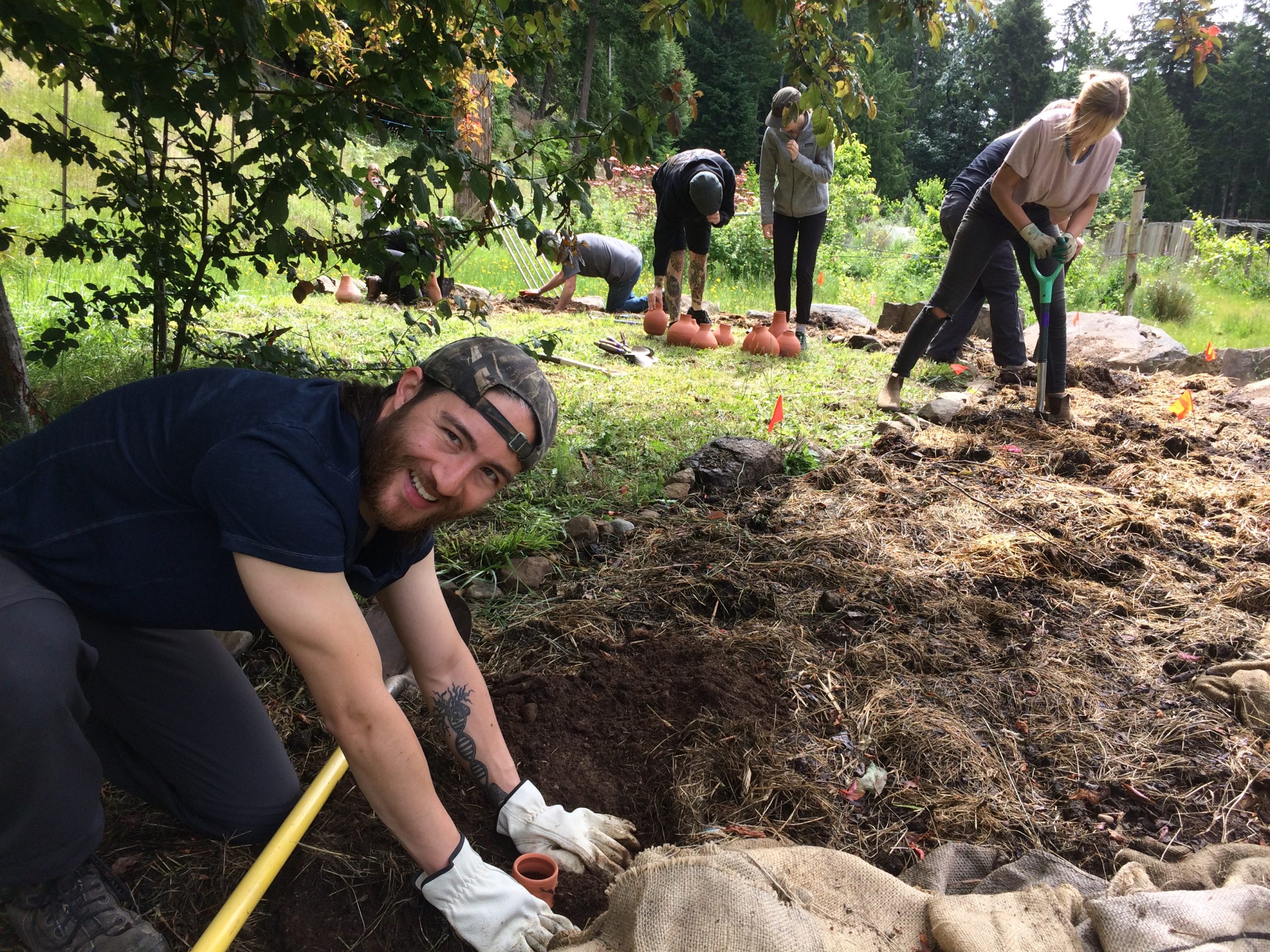Groundwater is the primary source of water for domestic, agricultural and industrial purposes on the Southern Gulf Islands. In recent years, water shortages and dry wells have become more common throughout the archipelago, due in part to ongoing development, increasing tourism, and the impacts of climate change.
Our unique Mediterranean climate – consisting of mild, wet winters and warm, dry summers – causes island water tables to become saturated throughout the winter and then to dry out during the annual summer drought. It is estimated that over 80% of the rain that falls on Galiano Island in the winter months is quickly lost to the ocean. This means that if more island residents catch and store precipitation during the winter season for use in the summer, we can conserve groundwater supplies for the users and ecosystems that rely on them.

Island residents can conserve water in numerous ways. Some are expensive and require careful planning; others are easy and can be implemented easily at home.

The first step is to find creative ways to reduce demand on water resources

Capture and store rainwater for non-potable and/or potable uses

Recycle water from the home for toilet flushing and use in the landscape

Only plant native and/or drought-tolerant species in the landscape (xeriscaping)

Help increase the island’s capacity to capture and infiltrate water using natural systems

Invest in drip irrigation, ollas, or other efficient forms of water delivery to plants. You can also mulch the soil to prevent excessive evaporation.
One way to capture and store rainwater is to harvest it from rooftops for later use in the home or landscape. Depending on the intended use of the water – potable or non-potable – careful consideration must be given to the materials of the roof; design of gutters, filters, and conveyance piping; and size, location, and type of storage container. For pressurized potable systems, professional plumbers and permitting will be involved. For non-potable uses, it is possible to design and install simple rainwater harvesting systems yourself, without a permit.
At the Millard Learning Centre:

The most powerful way to reduce our impact on groundwater and local aquifers is to reduce our overall water use. Bathing, flushing, washing cars, and doing laundry less and more efficiently is a great place to start. From there, installing more efficient appliances, showerheads, and faucets is a no-brainer. Switching from flush toilets to composting toilets can have a significant impact on reducing household water use.
At the Millard Learning Centre:

Greywater systems allow us to safely re-use lightly-soiled water from showers, baths, sinks, laundry machines, and dishwashers in the landscape or for toilet flushing. The design of the system depends greatly on the source and end-use of the greywater. More sophisticated systems allow for better filtration and targeted irrigation, but can be expensive and prone to failure; simpler systems are less configurable but cheaper, easier to maintain, and less resource-intensive. The right design will incorporate your household patterns of water use, as well as your budget and maintenance abilities. Whether you re-use greywater or not, it is important to choose biodegradable detergents, personal care products, and cleaning agents.

Cisterns aren’t the only way to capture and store rainwater. Wetlands, ponds, bioswales, rain gardens, and coarse woody debris can all capture rainwater, creating important habitats for aquatic and semi-aquatic species, aiding in groundwater recharge, and making more water available to plants and animals during summer drought. In fact, your yard may already be storing water – before imagining something new, it is always best to observe what is already working, and then consider how best to aid in that process. When designing a pond or wetland, don’t forget to let it be natural: avoid clean lines or a ‘tidy’ aesthetic. Curves, irregularities, rocks, and woody debris provide habitats for many important species. Sometimes, the best contractor is a beaver!

Here on Galiano Island, a large variety of beautiful, edible, medicinal, and useful native species thrive in our mild winters and dry summers. There are native plants to suit every purpose and habitat niche; despite this, a great deal of damage has been done to native ecosystems in order to make them suitable for introduced ornamental or edible species. By fitting the right native plant to the right niche, it is possible to reduce landscape irrigation requirements to almost zero.

A significant proportion of household water use in rural areas is irrigation for crops and landscape plants. Some irrigation are much more efficient than others. Replacing sprinklers and hoses with drip irrigation systems can conserve water, applying it directly to the root zones of thirsty plants. Ollas (unglazed ceramic pots) can provide on-demand passive irrigation to nearby plants using simple materials. Hugelkultur beds, mulching, and other water-conserving practices can limit water needs for plants.
At the Millard Learning Centre:
